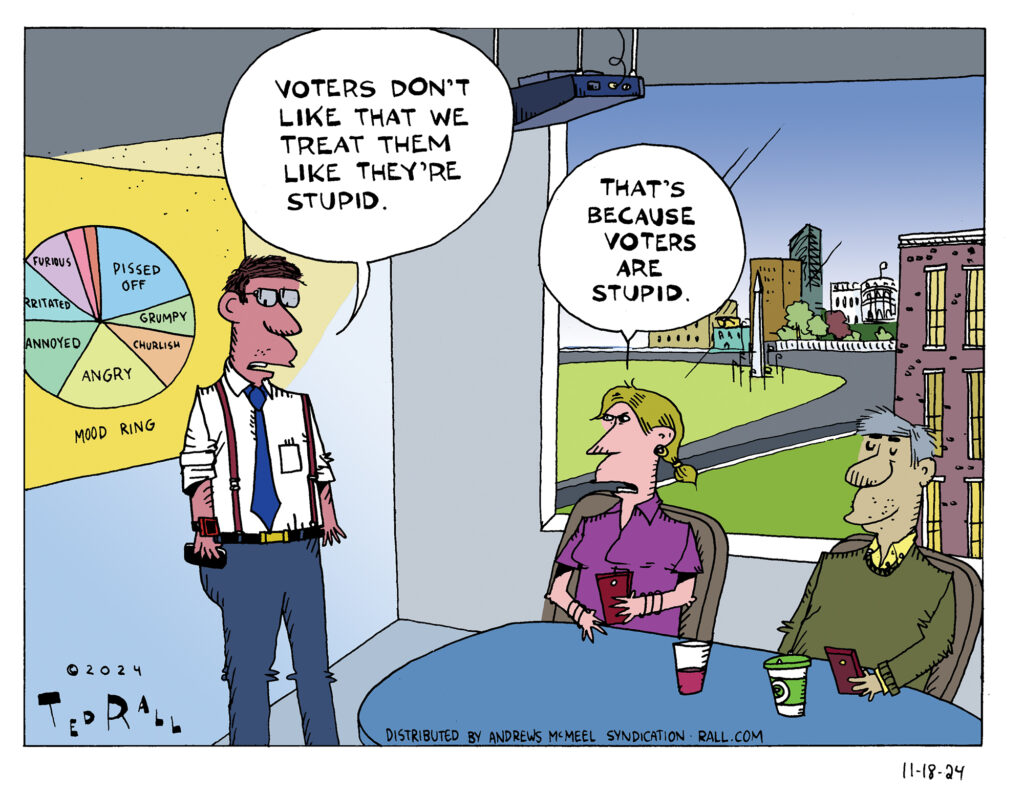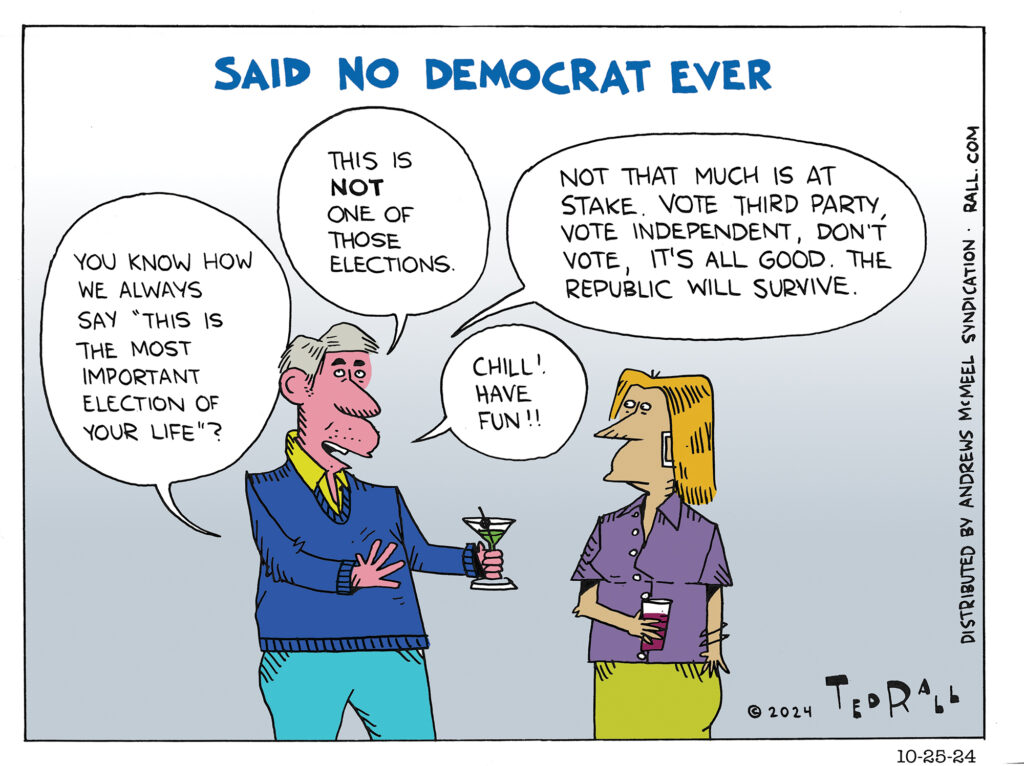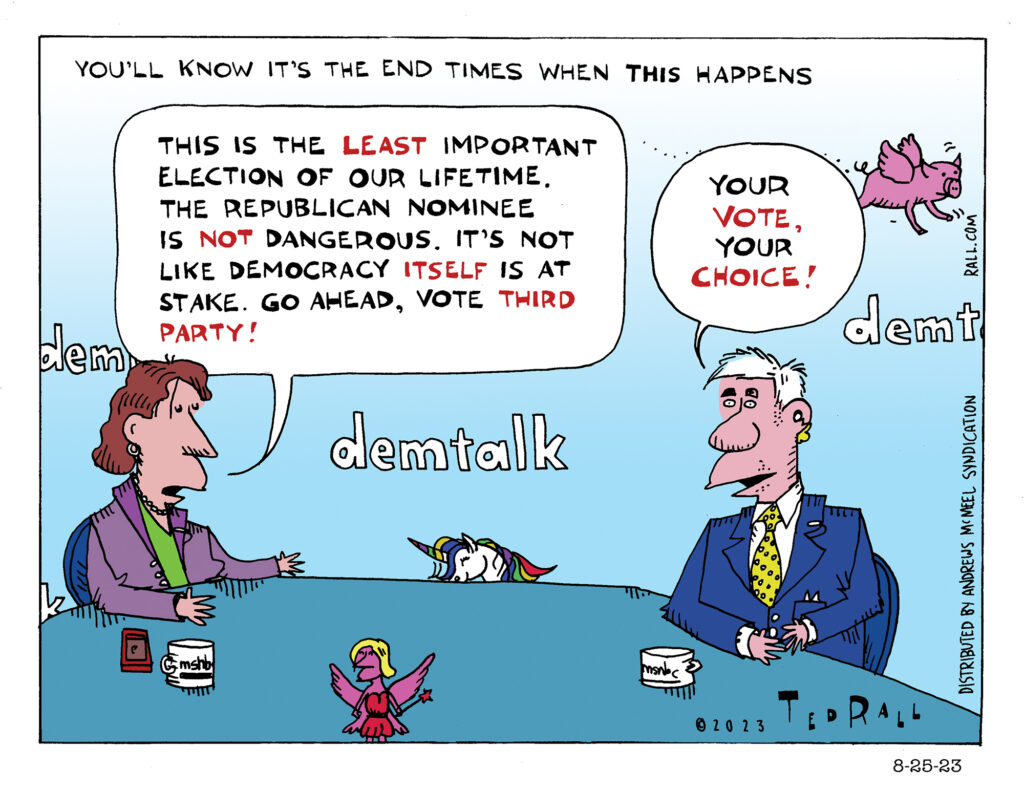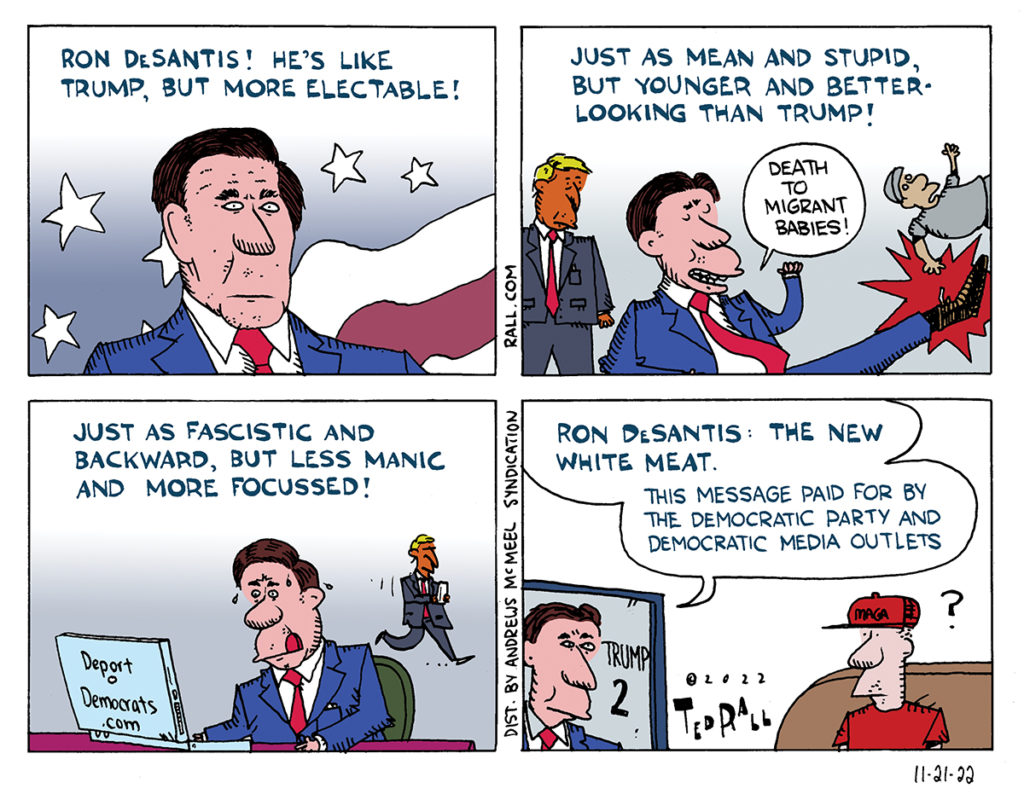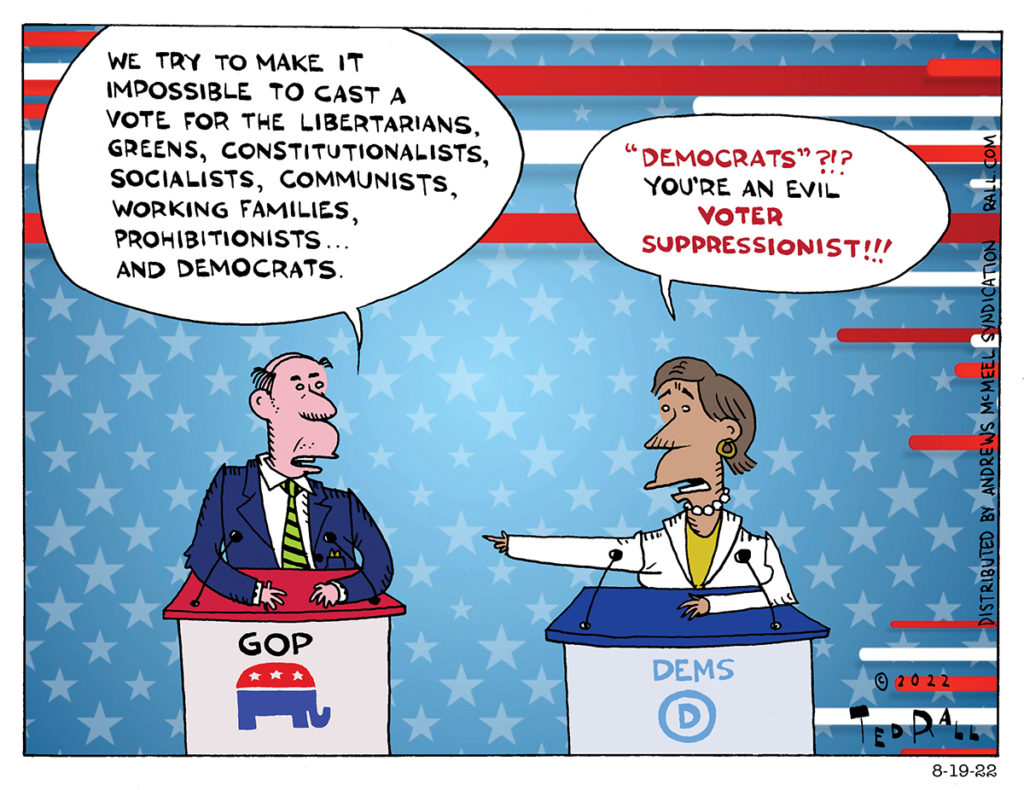The DMZ America Podcast’s Ted Rall (on the Left) and Scott Stantis (on the Right) are joined by syndicated columnist Clarence Page of the Chicago Tribune to discuss the despondent state of the Democratic Party in the wake of their defeat. Progressives like Bernie Sanders say the party erred in neglecting the working class, moderates think the party appears too “woke” for mainstream Americans and it’s hard to reconcile Biden and the Democrats’ criticism of Donald Trump as dishonest with his decision to pardon Hunter Biden despite numerous categorical denials that he would do so. Where does the Democratic Party go from here? Is “resistance” possible and, if so, what will it look like?
The TMI Show Ep 29: “Hunter Biden Pardoned Despite President’s Repeated Promises”
President Joe Biden and his press secretary and other surrogates have repeatedly told the media that he would not pardon his son Hunter Biden on federal tax evasion and gun charges under any circumstance whatsoever. Nothing has substantially changed, yet the president has gone ahead and issued the most controversial presidential pardon since Gerald Ford let Richard Nixon off the hook. Moreover, he has used language familiar to those who follow President-elect Donald Trump to excuse his brazen self dealing and lying, justifying his actions by accusing the Department of Justice of having been politicized.
What does it mean when the standard bearer of the Democrats, who claim that they differ from Trump because they are truth tellers, is so willing to make a mockery of the truth? What message are we to take from the fact that both political parties say that the DOJ is politically compromised? What if anything does this do to the Democratic Party brand? What should go Biden have done differently?
Attorney and historian Tyler Nixon joins the TMI Show’s Ted Rall and Manila Chan to discuss the political and cultural implications of the Hunter Biden pardon.
Feel the Love
Many swing voters who opted for Donald Trump told pollsters that they felt that Democratic coastal elites looked down upon them and that they were reacting against the feeling that they were viewed with contempt. After the election, as if to confirm their suspicions, Democrats repeatedly said that people who voted Republican were stupid.
DMZ America Podcast Ep 176: Can the Democrats Be Fixed?
The Democratic Party finds itself in nearly as much disarray as the GOP did following Barry Goldwater’s 1964 defeat to LBJ. DMZ America co-hosts Ted Rall (from the Left) and Scott Stantis (from the Right) turn to American political scientist Charles Lipson to dissect what went wrong for the Democrats in the election and to discuss their prospects for renewal. Can Democrats follow the Republican example and rebuild their grassroots organization from the ground up at the local level? Can they free themselves of their addiction to corporate money in order to increase their populist appeal? Or should the party add domestic policy to a foreign policy that has already moved to the Right of the Republicans, completing a realignment that reverses much of what transpired between 1928 and 1932?
Listen to the Audio Version:
Watch the Video Version:
Keywords: Donald Trump, 2024 election results, 2024 election, 2024 campaign, Democrats, LBJ, Barry Goldwater, political realignment, grassroots organization, Democratic Party, Charles Lipson, party politics, reinvention
Said No Democrat Ever
Every election, including this one, Democrats like to say that it’s the most important election of our lifetime. Therefore, they say, we can’t possibly risk a Republican coming to power so we’re not allowed to vote for an independent or third-party candidate. That message might resonate a little more if they didn’t say it in every single election.
The Final Countdown – 7/18/24 – JD Vance Gives First Speech Following Designation
 On this episode of The Final Countdown, host Ted Rall and guest host Steve Gill discuss an array of current events, including JD Vance’s speech at the RNC.
On this episode of The Final Countdown, host Ted Rall and guest host Steve Gill discuss an array of current events, including JD Vance’s speech at the RNC. The Final Countdown – 7/10/24 – Americans Brace for Trump’s Long-Awaited VP Pick
 On this episode of The Final Countdown, hosts Ted Rall and Angie discuss developments worldwide, including Americans waiting for Trump to announce his VP pick.
On this episode of The Final Countdown, hosts Ted Rall and Angie discuss developments worldwide, including Americans waiting for Trump to announce his VP pick. Democrats Augur the End Times
Every single election, Democrats say the same exact thing: This is the most important election of our lifetime. Democracy itself is at stake. This is a vital time for us to come together and fight the Republicans because, this time unlike any other, they are dangerous and unreasonable. They would have more credibility were they to say, on occasion, that that wasn’t true.
Voter Suppression? You’re Soaking in It
Democrats rightly criticize Republicans for efforts to suppress the Democratic vote. But both parties suppress third parties like the Greens and Libertarians. If you doubt that, look for the third parties next time you cast a ballot. Any country with just two parties can’t reasonably call itself a democracy.

